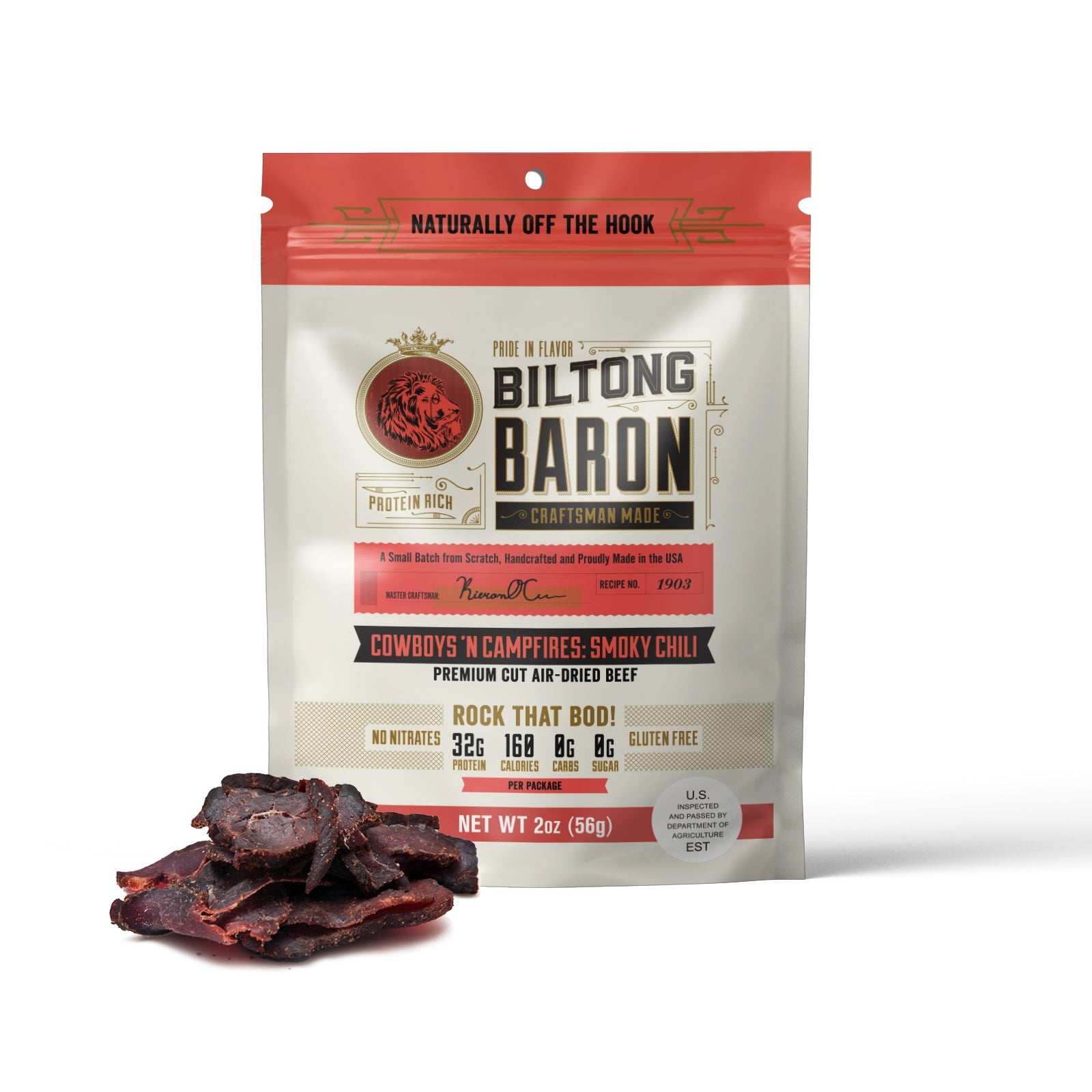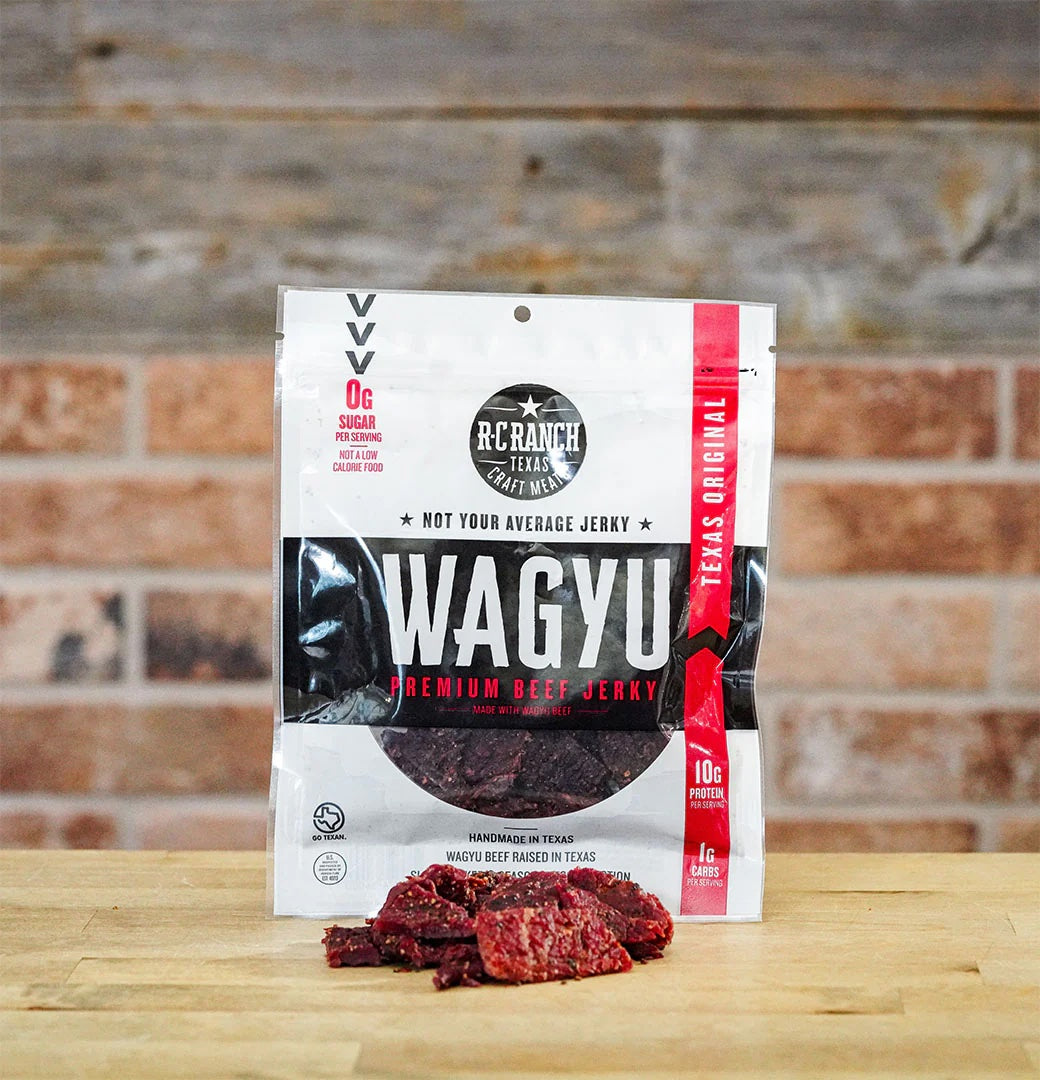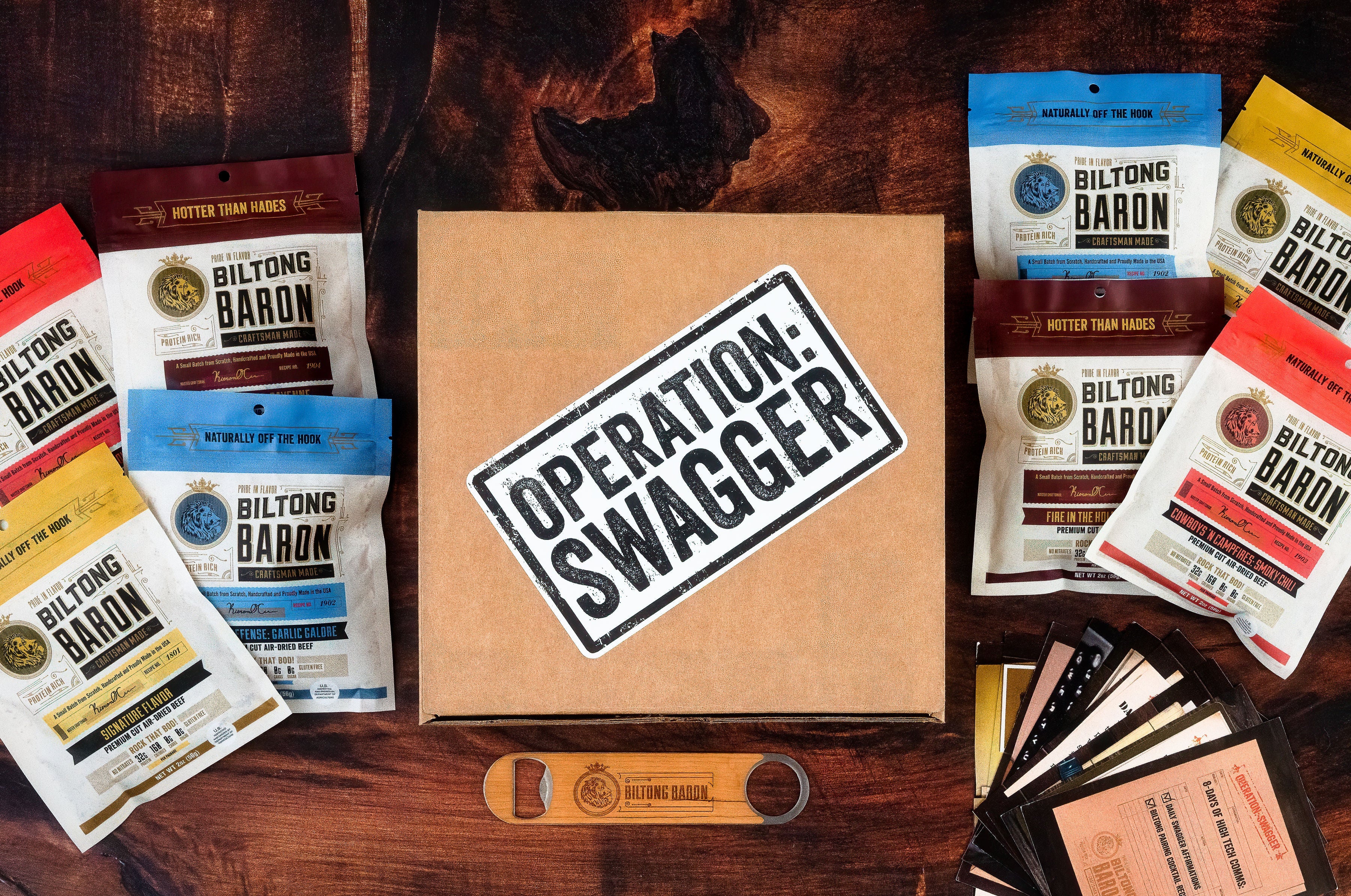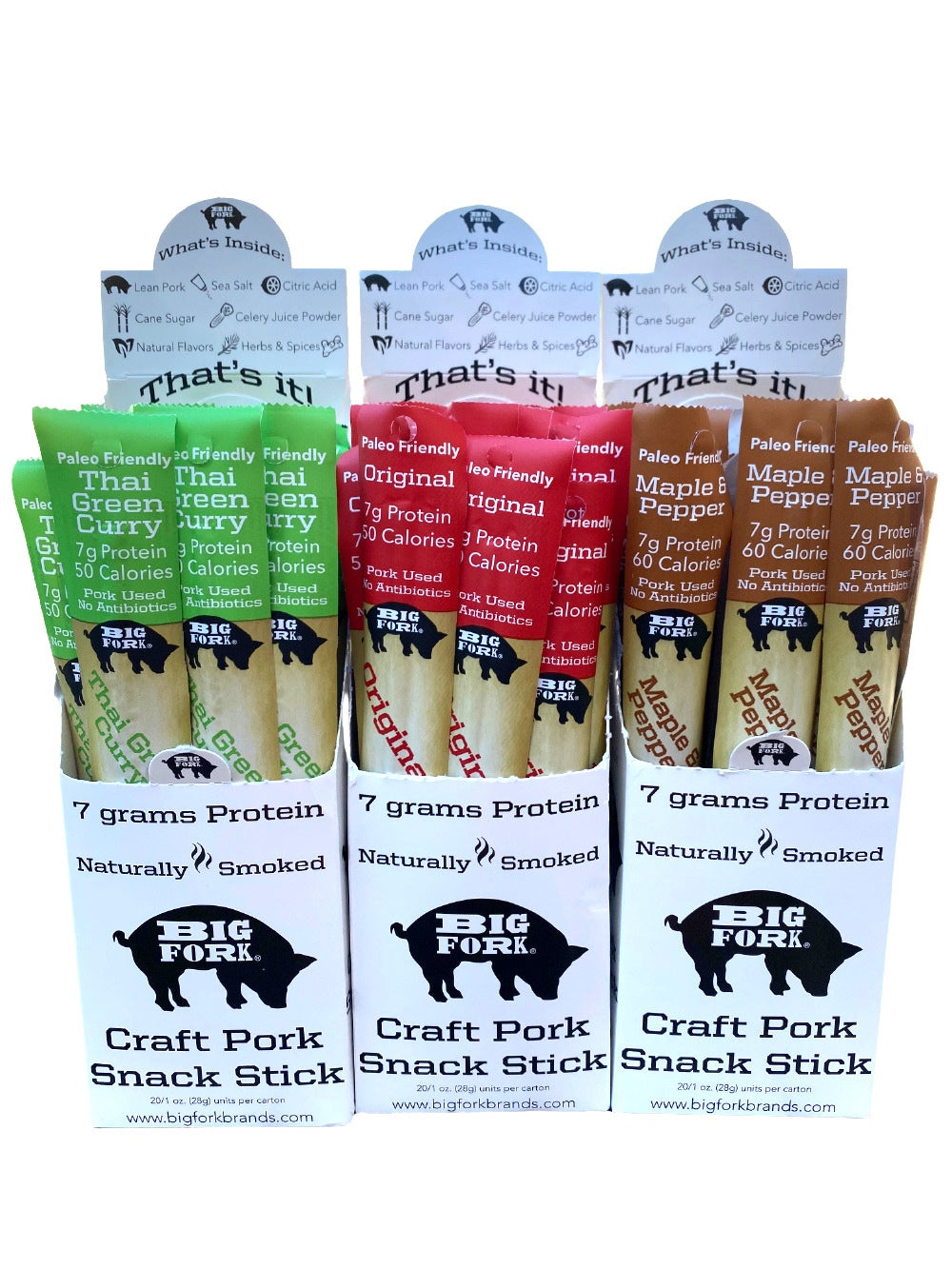-
Recently Viewed
You have no recently viewed items.
-
Featured Brands
- All Products
- About Us
- Contact Us
- Our Blog

Biltong Jerky Guide
Have you ever heard of biltong?
If you're a fan of exotic jerky, you might have eaten this type of jerky without even knowing it. Biltong is known for its South African roots, most notably in these countries:
- Botswana
- Malawi
- Namibia
- South Africa
- Zambia
- Zimbabwe
Typically made with beef, biltong is also available in more exotic meats, like ostrich or kudu (a species of antelope). When livestock was plentiful, the people of South Africa began to store and preserve all that meat using techniques involving salt, brine or vinegar.
Interested in learning more about biltong jerky? Here’s everything you need to know.
What Is Biltong Jerky?
“Biltong” comes from the Dutch term “bil,” meaning “buttock,” and “tong,” for “strip” or “tongue.” The main differences between biltong and jerky involve these factors:
- Meat thickness
- Curing and dehydration process
- Required temperatures
- Type of meat
Meat Thickness
Jerky is usually cut thin to make sure it can be fully dehydrated.
Biltong is cut thick or sometimes dried whole and then cut into pieces for eating. The meat’s thickness determines how “wet” it is inside. The thicker the meat, the more tender it is toward the center.
Process
Jerky takes low and slow heat for several hours to dehydrate, but biltong takes cool, consistent airflow over about five days. The airflow can’t be too strong or too direct because it can turn your delicious biltong into a brick.
You can dehydrate jerky on drying racks, but biltong is marinated and hung so that airflow remains even during the drying process.
Meat Variations
You can make jerky with all types of meat — there’s even debate about whether more creative ingredients like mushrooms, soy and coconut count as true jerky.
But in the world of biltong, ingredients are limited to red meats. Beef, ostrich, kudu and venison are the most popular.
[Related: What Is Beef Jerky?]
Biltong vs. Jerky: Nutrition
Both jerky and biltong are high-protein, low-carb snacks. But biltong usually has a higher fat content because it’s cut and cured thicker. Technically, jerky can be a healthier option, but biltong is fine in moderation.
Biltong vs. Jerky: Taste
On the taste side, jerky comes in a slew of flavors — from spicy notes of habañero and the sweet taste of teriyaki to quirky trends like barbecue and lemon garlic. Your choice of jerky flavors is practically unlimited.
Biltong is traditionally made with vinegar and a few select spices, including coriander, black pepper, cloves and brown sugar. Together, these spices create a delightful mixture of spicy and sweet paired with the meat’s savory flavor.

"Typical Homemade Biltong” by Schalkb2
The History of Biltong Jerky
Before diving into how to make biltong jerky, let’s discuss its history.
Much of South Africa’s climate is hot, so you might think people made biltong under hot, dry conditions. But you might be surprised to learn that biltong was typically made only during the winter months — during warmer months, harmful bacteria and mold could ruin the meat. For example, listeria is still a concern, but the chances of ingesting it are slim when the meat is cured properly.
Over 400 years ago, South Africans discovered they could preserve meat by curing it with salt and hanging it to dry. After Europeans arrived, they began to use other forms of preservation involving vinegar and spices.
The most common spices in traditional biltong were coriander, coarse black pepper, cloves and brown sugar. Those making it would often spice the meat generously to ensure its preservation and enhance its taste.
[Related: Where Does Beef Jerky Come From? Beef Jerky History]
How to Make Biltong Jerky
If you want to make biltong, you need to start with cool conditions and steady airflow. You can’t make proper biltong with heat of any kind. A refrigerator will work just fine, but you can buy a biltong box if you prefer.
- Follow the grain of the meat and cut pieces that are one inch thick.
- Add your choice of spices and vinegar to the meat.
- Rub in the spice/vinegar mixture so that the meat is coated thoroughly.
- Let the meat cure for 24 hours in the fridge in a covered container.
- Wait for the meat to cure.
- Pat the meat dry carefully without removing too much of the spice mixture (you don’t want to rob it of any flavor).
- Hook each piece of dried meat by the thickest part.
- Hang the strips in the refrigerator or biltong box. Make sure to space out each piece of meat so that the strips don’t touch, and double-check that your airflow isn’t too strong.
- Wait four to seven days (on average).
- Wash and dry your hands to test the biltong’s readiness.
- Squeeze each piece to determine whether the middle is dried all the way through. Good biltong has a bit of give in the center, with a nice dried crust encasing the meat.
- Use a sharp knife to cut the biltong when you think it’s ready.
- Enjoy!
[Related: How to Make Beef Jerky: Your Guide to Homemade Beef Jerky]
There’s Science Behind the Preservation Process
Salt and rich spices have more of a role than people were aware of hundreds of years ago.
Because of modern science and technology, we know that adding salt or any form of potassium nitrate kills a deadly bacterium called Clostridium botulinum. It’s the same bacteria that causes botulism — better known as food poisoning. Plus, vinegar’s acidity inhibits the growth of Clostridium botulinum.
Even coriander has antimicrobial properties that kill or reduce the growth of various bacterial strains. The ingredients for preservation, combined with winter’s frigid temperatures, provided an ideal environment for biltong to be created and packaged for safe eating.
Because of modern preservation and cooking methods, avoiding food poisoning with biltong may not seem like a big deal today. But getting food poisoning from raw, unpreserved or even rotten meat was — and still can be — a death sentence.
And remember that modern medicine, medical attention and resources like clean water weren’t as readily available as they are in the U.S. today.
[Related: How Long Does Beef Jerky Last?]
Bonus: Beef Biltong Jerky Recipe
Keep your biltong recipe simple with these ingredients:
- About 5 pounds of beef with fair marbling
- 1 cup brown/malt or cider vinegar
- 1/4 to 1/2 cup whole coriander seeds
- 1/4 cup coarse sea salt
- 1 tablespoon whole black peppercorns
- 1 teaspoon baking soda
Roast the coriander in a pan for a few minutes to release more of its natural flavor. Crush the coriander seeds and black pepper until they appear evenly ground.
If using beef, use the top rump or silverside cut. Slice along the grain into 1-inch strips. Salt the meat evenly, and let it sit for 3 hours.
Wipe off the salt, and then place the meat in a container with the vinegar. Allow it to “wet cure” for 2 hours covered. Turn over the meat halfway through to help it cure evenly on both sides.
Next, sprinkle the baking soda onto the meat while it’s in the vinegar mixture. The baking soda reacts and neutralizes the acid in the vinegar. After it’s done bubbling, remove the meat and pat dry.
Now, spice the meat with the coriander and black pepper blend by coating it generously. Use meat hooks to hang each strip inside the fridge or biltong box.
If you want to really nail biltong’s texture and flavor, record the weight of each strip and aim for a 50% moisture loss. This can take from 4 days to 1 week. You can also use the “finger test” with clean hands to squeeze and check whether the meat has any give.
When the meat is ready, use a sharp knife to cut across the grain — revealing beautifully made biltong.
Store it in airtight packaging or the freezer.
Learn More About Exotic Jerky
Curious about other types of exotic jerky? You're in luck— the Jerky Universe has guides to jerkies from all around the world, including these tasty types:
But there's even more to explore in the Jerky Universe — follow us on social and subscribe to our newsletter below!
- Choosing a selection results in a full page refresh.









